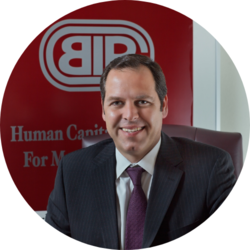
The Reason Smart CEOs Plan their Exit and How To Start
A CEO typically has many items on their to-do list when they begin an executive role they likely worked diligently to obtain. These projects could include planning out major initiatives they will undertake, establishing the work culture they believe will generate productivity, and getting to know the employees under their watch.
Though it may sound counterintuitive, beginning the process to find their eventual replacement at the top of the company should also be a significant leadership priority early in a CEO’s tenure. Too often, such succession planning does not take place until right before the CEO is going to step down.
A rushed process can result in a poor transition, tarnishing the well-earned reputation of the exiting executive and also damaging the company’s bottom line. For example, at Challenger Gray & Christmas we have seen that a botched succession can decrease revenues by up to 3 and even 4 percent for large companies.
However, a well-planned transition is attainable and can help ensure you leave behind a positive legacy as you move on to the next phase of your professional life. Here are some best practices for CEOs seeking to exit their companies successfully:
Begin Succession Planning Early
While it might appear strange to start thinking about who will replace you right after starting your role as CEO, that is exactly what experts recommend. According to the following Harvard Business Review article, this process could begin as soon as your first day on the job and should commence no later than six months into your position.
Starting succession planning with anticipation will allow you to begin identifying potential replacements, including from among those working for you. You can assist internal candidates with great promise to refine the skills they will need to lead the company by providing mentorship and executive coaching or by giving those employees greater responsibilities and observing how they perform on key projects.
Though only one candidate will ultimately replace you, ensuring multiple direct reports to you enhance their skills will benefit the company as a whole for years to come.
Beginning planning for your exit in the initial stages of your job is also helpful in case something happens that prompts you to have to leave your position much sooner than anticipated, such as a medical issue or family matter.
Engage the Board
In a well-functioning company, a CEO will be asked to provide significant input about who is chosen as his or her successor. However, it is ultimately the board of directors who will make the final decision.
Still, a board may not be eager to bring up the issue with the current CEO for fear of alienating the executive, especially if he or she is performing very well and has no immediate plans for departing. This dynamic provides the CEO with an opportunity to take the leadership initiative.
A CEO can strategically encourage the board to start planning succession earlier than they otherwise might and, definitely, long before a transition is expected. Engaging the board at the early stages of the process allows its members to interact with possible candidates and get a sense of whether they have what it takes to step into the role or need further development. This is particularly true for internal candidates who are given a chance to present before the board at major meetings and speak about important company projects.
Additionally, board members have their own professional networks they can utilize to identify a possible new CEO, an action that can broaden the candidate pool and ensure high-quality candidates.
Be Prepared to Step Back
Leaving a CEO position, especially at a company you have helped experience great success, is never easy. It can be very emotionally challenging for executives to let go of their attachment to a business even if they have put much time into planning the transition.
Ensuring you have strong emotional support from colleagues, as well as family and friends outside the company, can be very beneficial during this final period in the life cycle of a CEO.
You also should make sure you have had in-depth conversations with the board about what role you will play at the company after you step down. This could include some overlap at the company between the current CEO and incoming one to allow you to share with your replacement key information about the business and its employees.
Another option is to volunteer to keep serving on the company’s board for a short period. If you decide to join the board, you should have clear everything is aimed towards the success of the company. If there is a drastic change in strategy, you will have to be wise and accept that determination without resistance.
Regardless of what you and the board agreed to in terms of your post-CEO role, you should ensure it is time-limited. This clarity will help guarantee you will not linger too long.
If you implement the previous best practices, you will set yourself up for a smooth transition out of your CEO role, leaving behind a positive legacy for years to come. You also will have guaranteed that the company will have a high-impact team leading the business into the future and will maintain fundamental corporate values you established during your tenure.
If you are seeking assistance building a successful team in preparation for succession planning, we at Barbachano International have great expertise in helping companies find the right fit for C-Suite and high-level executive positions.
Be sure to check out our blog to learn more about the latest trends regarding Human Resources, Employee Retention, and Recruitment topics.

By Fernando Ortiz-Barbachano
President and CEO of Barbachano International (BIP),
The Human Capital Solutions leader in Mexico, Latin America, and the USA, offering high-impact executive search, executive coaching, and outplacement.
About Barbachano International
Barbachano International (BIP) is the premier executive search and leadership advisory firm in the Americas (USA, Mexico, Latin America, & Canada) with a focus on diversity and multicultural target markets. Outplacement and Executive Coaching services are provided by our sister allied company Challenger Gray & Christmas. Since 1992, BIP and its affiliates have impacted the profitability of over 50% of Fortune 500 Companies. BIP has been recognized by Forbes as Americas’ Best Executive Search Firms and currently ranks #27 and #3 on the West Coast. Headquartered in San Diego, California with satellite offices in Florida and Mexico. As member-owners of NPAworldwide Recruitment Network, we are supported by partner offices in over 50 countries.



